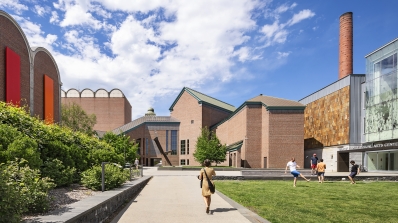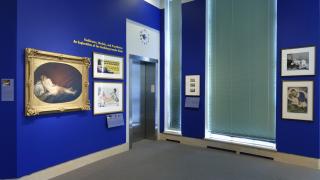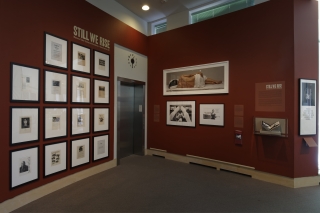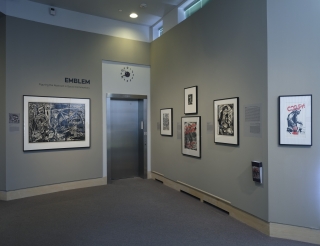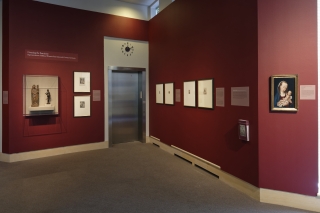Exhibitions Archive
Journeys along the Tokaido Highway
A Feast for the Eyes and a Sacred Trek for the Feet
This exhibition, at its essence, is about the power of place. A single locale can carry myriad meanings and experiences for different people, as can be seen through depictions of the Tokaido highway. As the main arterial road in Japan during the Edo period (1603–1868), the Tokaido held great significance for citizens and artists alike. Examining different artists’ representations of the Tokaido illustrates the diverse range of experiences people had along the road, as well as the distinctive meanings each artist attached to the highway.
An Exploration of the Reclining Female Nude
Goddesses, Models, & Prostitutes
The reclining female nude has been a recurring theme in Western art since the 1500s. It began with erotic images portraying an idealized woman (often in the guise of a goddess) for the pleasure of the male viewer. Through her passive, reclined pose, she offers her body for our gaze; her recumbent nudity implies that she is sexually available. She represents sensuality, beauty, and desire. As the subject of the female nude became canonized, artists began to expand the ways in which it was represented. She can be depicted alone or with guests and companions. With each incarnation of the reclining female nude, the tradition continues to grow and change.
Women of Color Existence/Resistance in Contemporary Art
Still We Rise
Still We Rise features contemporary art from six women of color whose work embodies the theme of existence/resistance. Working against the backdrop of sexism and racism in the United States today, in its particular “post-racial” moment, these artists remind us that women of color live in the dangerous intersection of race-and gender-based forms of oppression.
Exploring the Excesses of Human Emotion
The Tortured Soul
When encountering the tortured soul, one is forced to confront aspects of the human experience that are often easier to ignore. The tragedies of human folly frequently appear in literature and have captured the attention of a variety of people, including artists. Often the aberrant behavior of a troubled individual comes as the result of excess, whether it is lust for power, greed, love, or some emotion that is felt so intensely that the pull is irresistible, regardless of consequences. As artists depict these struggles, the relationship between the rational and irrational comes into play. Questions arise about the role of imagination and creativity in the face of fact and logic. Both imagination and reason have much to offer; yet both can be dangerous. The works of art featured in The Tortured Soul represent the darker aspects of humanity described in literature in order to reveal continuities with contemporary life.
Emblem, type, symbol, token, trope, image, sign—all of these words describe specific visual forms that represent abstract ideas through recognized shapes, colors, and figures. Many emblems contain culturally specific messages, often taken from sacred or ancient texts, the meanings of which evolve over time. Since these images are quickly legible to members of a shared culture, artists mobilize emblems to provoke certain reactions in an audience. This exhibition draws together various types of emblematic prints—primarily woodcuts—that address social problems and issues.
Representations of Biblical Women from Sixteenth-Century Germany
Creating the Feminine
Many artists in sixteenth-century Germany created images of biblical women and female saints. The ultimate woman, Eve, brought life and, through her sin, death to the entire world. Biblical accounts also describe an alternative female trope, the virgin martyr or saint. These two ends of the spectrum did not constitute the only ways women could be depicted, and images varied depending on what an artist chose to emphasize.
